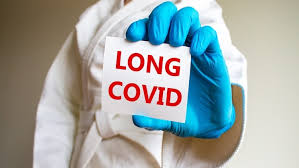Based on the Netherlands where 1.7% of all euthanasia deaths were for mental illness alone, if permitted, there could have been 255 euthanasia deaths for mental illness alone in Canada in 2023.
Alex Schadenberg
Executive Director,
Euthanasia Prevention CoalitionDying with Dignity, Canada's leading euthanasia lobby group, launched a court case on August 19, 2024 to force Canada to extend euthanasia to mental illness alone. This recent court challenge proves how extreme Canada's euthanasia lobby is and how they have redefined the meaning of the words compassion and equality.
The euthanasia lobby falsely believe that the Supreme Court of Canada, Carter decision (2015), created a right to euthanasia, (which it did not) and that the Carter decision also required Canada to permit euthanasia for mental illness alone (which it did not).
Stephanie Taylor reported for The Canadian Press that:
An application filed by Dying with Dignity in Ontario Superior Court on Monday argues that it is discriminatory to bar people with mental disorders from being eligible for an assisted death when it is available to people who suffer physically.
The euthanasia lobby has launched a Charter challenge to force Canada to extend euthanasia to people with mental illness alone based on equality. The Dying with Dignity press release states:
The continued exclusion reinforces the stigma and historic prejudice against people with mental illness. It violates section 15 of the Charter by discriminating on the basis of the type of disability experienced. It also violates section 7 of the Charter by denying people with a mental illness the freedom to make fundamental decisions about their body and life; this denial is overbroad. The differential treatment of people whose sole condition is a mental illness minimizes the enduring and intolerable suffering that some individuals experience and undermines their full participation in the range of choices that are available to all other people across Canada.
The Dying with Dignity media release justifies euthanasia for mental illness by stating:
In fact, of the 8,042 assisted deaths in The Netherlands in 2023, 138 (1.7%) were because the primary medical condition was a mental illness.
I have predicted that there were more than 15,000 Canadian assisted deaths in 2023. If Canada approves euthanasia for mental illness alone, based on the Netherlands euthanasia data of 1.7% of all euthanasia deaths were for mental illness alone, there may have been 255 euthanasia deaths (1.7%) for mental illness alone in Canada in 2023.The reality is that Canadians with mental illness are already being
killed by euthanasia, even when their primary purpose for seeking death
is a mental illness, so long as the person has a co-morbidity that
enables the doctor or nurse practitioner to approve the death.
The issue of euthanasia for mental illness alone has always been part of the euthanasia debate. The original law (Bill C-14) that was passed in June 2016 excluded euthanasia for mental illness alone and it required that a person's "natural death be reasonably foreseeable" (which was not defined). Essentially Bill C-14 required that a person had to have a terminal condition in order to be approved to be killed.
In March 2021, the federal government expanded Canada's euthanasia law by passing Bill C-7. C-7 removed the requirement in the law that a person's "natural death be reasonably foreseeable", it removed the 10-day waiting period for people who were terminally ill, it added a 90-day waiting for people who were not terminally ill and it approved euthanasia for mental illness alone, but added a two year moratorium on euthanasia for mental illness alone to establish guidelines around this new category of killing.
Since then the federal government has twice delayed the implementation of euthanasia for mental illness alone with the most recent legislation (Bill C-62) delaying it until March 17, 2027.
When Canada passed Bill C-7 and eliminated the requirement that a person have a terminal condition to be approved to be killed, the result has been stories of Canadians with disabilities seeking or dying by euthanasia based on poverty, homelessness or an inability to access necessary medical treatments.Similar to Canadians with disabilities, Canadians living with mental illness are also more likely to live in poverty or homeless and they often have difficulties accessing necessary medical treatments. In some communities, a person with mental illness will wait more than 90 days to be seen by a mental health specialist, and yet the law permits euthanasia for non-terminally ill people with a 90-day waiting period.
This is the second Charter challenge launched by Dying with Dignity. On June 17, 2024 Dying with Dignity launched a Charter challenge to force all medical institutions to provide euthanasia.
The Dying with Dignity lawsuit proves how extreme that the euthanasia lobby in Canada has become.
The Euthanasia Prevention Coalition will seek to intervene in this court case.
Important articles on this topic:
- Euthanasia Prevention Coalition says that the expansion of euthanasia to include mental illness should be scrapped (Link).
- Treat people with mental health problems, don't kill them (Link).
- Provincial Health Ministers urge the Federal government to indefinitely pause euthanasia for mental illness alone (Link).
- Euthanasia for those with mental illness should not be on the table (Link).
- Euthanasia for mental illness should never come to pass (Link).
- Canada's euthanasia law. We've already gone too far. (Link).
- Canada has revealed the horror of assisted dying (Link).
- Canada must put the brakes on euthanasia for mental illness (Link).
- Don't abandon people to death by euthanasia (MAiD) (Link)







%2003.jpg)



















